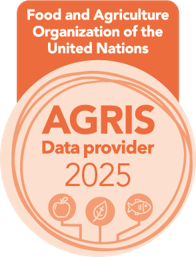Present status and future prospects to safeguard Nepali citrus industry against Chinese citrus fly (Bactrocera minax Enderlein)
Abstract
Unlike other Tephrid flies, the Chinese citrus fly (Bactrocera minax Enderlein) is univoltine and oligophagous species strictly restricted to citrus fruits. It has been a serious threat to the citrus industry in China, Bhutan, India and Nepal causing up to 100% of fruit drop before the harvest. Citrus groves, especially tight-skinned cultivars, sweet orange (Citrus sinensis L. Osbeck) in mid-hill districts like Ramechhap, Sindhuli, Dolakha, Kavre, Syangja, Gulmi, etc. have been threatened while in some pockets, lemon, acid lime, and mandarin have vanished due to the Chinese citrus fly (CCF). The driver behind the spread of this invasive pest seems to be poor research works on the phenology of the pest, ill-equipped management practices, flying nature of adult fly and easy movement of infested fruits. Therefore, with reviewing published data, this study aimed to figure out the most appropriate management technology for curbing the CCF and make comprehensive material for safeguarding the citrus industry in the future. Since Area-Wide Integrated Pest Management (AW-IPM) or Area-Wide Control Program (AWCP) was found to be an effective tool to control the CCF, individual practices are crucial to incorporate. Monitoring the pest with the lure of protein hydrolase (PH) and subsequently killing adults with attractive protein baits of 25% hydrolyzed protein + insecticide as lethal dinner is mentioned exceptionally better. In AWCP domestic practice: orchard sanitation is not so effective if the orchards are sloppy while shallow tillage adds less to the natural enemy mechanism of CCF pupae in the soil. Equally, we conclude that Sterile Insect Technology (SIT) is not so economical and the boons of natural enemies, parasitoid and
entomo-pathogens against CCF, is yet to be exploited.
Keywords:
Citrus fruits, Bactrocera minax Enderlein, Management, Citrus sinensis L. OsbeckDownloads

Published
How to Cite
Issue
Section
Copyright (c) 2020 Agriculture and Environmental Science Academy

This work is licensed under a Creative Commons Attribution-NonCommercial 4.0 International License.

